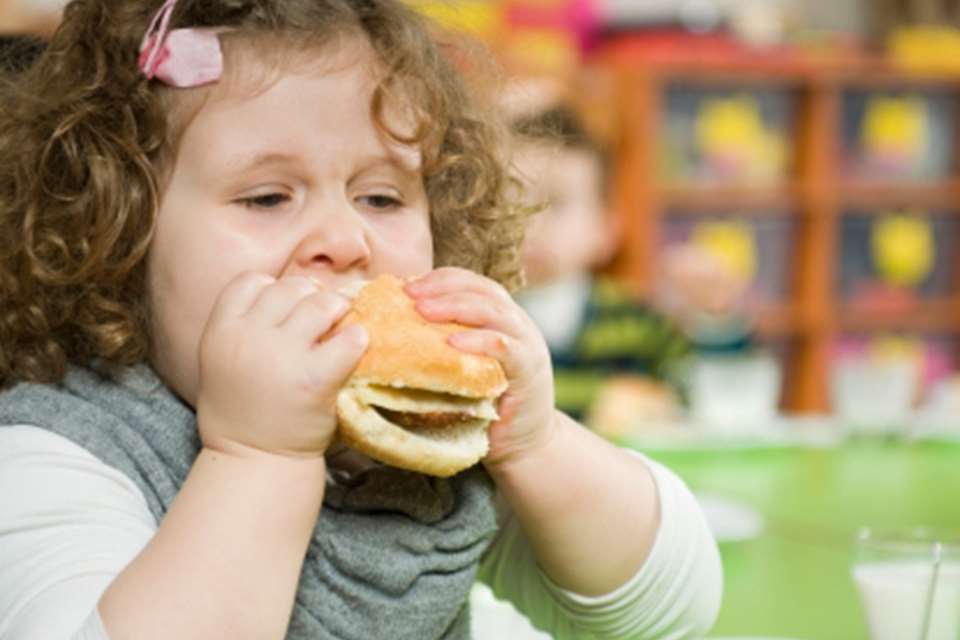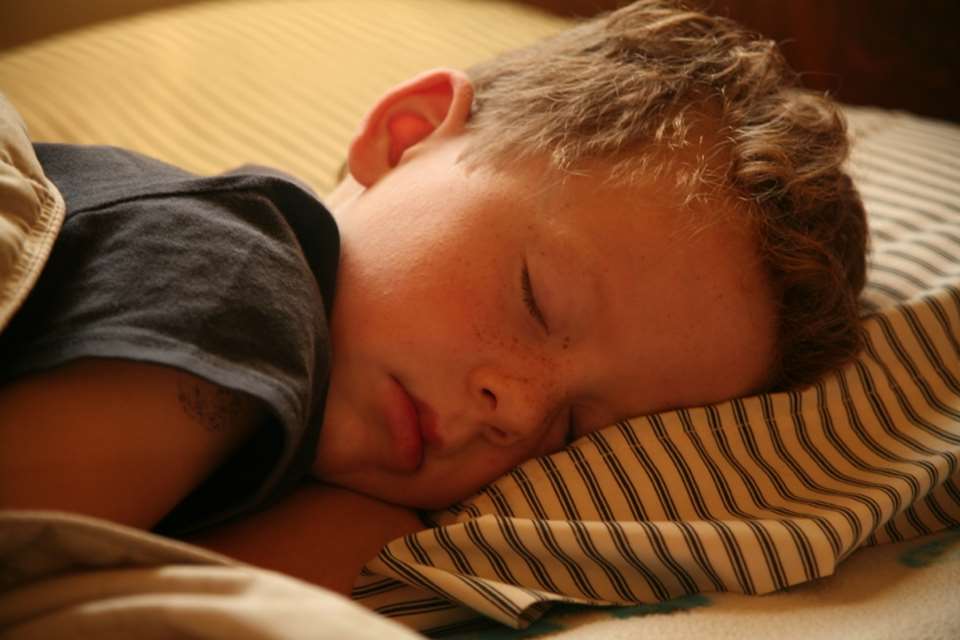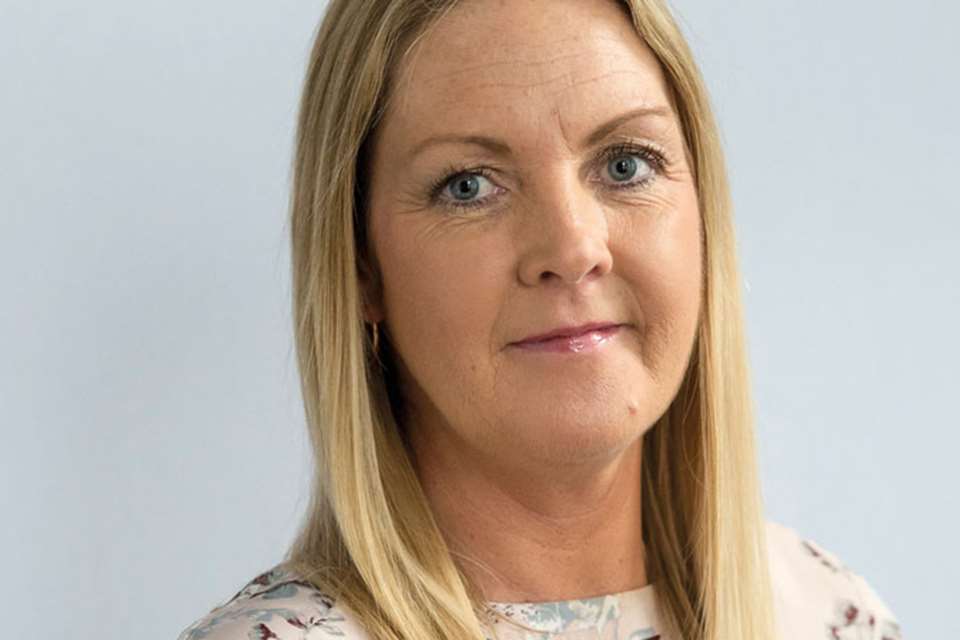EYFS Best Practice - All about… child obesity
Ruth Thomson
Monday, September 5, 2016
With the childhood obesity plan found wanting, Dr Lala Manners asks what should be done

The Government report ‘Childhood Obesity – A Plan for Action’ was finally published last month. After a four-year wait, it falls far short of what we know is required to address this critical issue in any comprehensive or sustainable way.
Putting partisan views aside, however, there are positives within the strategy that we should commend:
- The early years is recognised as an important period that supports the future well-being of all children.
- Settings will be supported to meet current Government dietary recommendations.
- The EYFS will be revised to include the Chief Medical Office (CMO) Early Years Physical Activity guidelines and guidance on promoting physical development.
- Assessment procedures for PD will be amended to support levels of physical activity.
- Ofsted inspection criteria will be amended to reflect the implementation of the physical activity guidelines and measures taken by settings to support health, well-being and physical activity.
- Practitioners will therefore be encouraged to seek relevant training to ensure they fully support physical activity within their PD practice.
- The strategy follows the launch of ‘Every movement counts’, a Department of Health campaign urging parents and early years professionals to ensure that under-fives are physically active for at least three hours a day (See: www.gov.uk/government/uploads/system/uploads/attachment_data/file/541228/Children_0-5_infographic.pdf).
The initiatives are welcome, but so much more is required as the age at which obesity affects overall health and well-being – and compromises life chances and opportunities – has now reached the youngest members of societies worldwide.
VITAL STATISTICS
Obesity has no respect for age, gender or geography and has a significant impact on the fiscal, environmental, educational, transport and health policies of all countries:
- Globally, in 1990, 32 million children between birth and five years were obese; by 2014, this figure had risen to 41 million. The predicted figure for 2025 is 75 million.
- In developing countries, there has been a 30 per cent rise in childhood obesity in the past 10 years.
- In European countries, one third of all children aged six to nine years are now either overweight or obese.
- In the US, 7.1 per cent of under-twos are obese, and in the 2.5 to five-year age group obesity rates have risen from 5 per cent in the 1970s to 8.4 per cent in 2014.
 In the UK, in 2014/15, 12 per cent of children were obese by age three and 15 per cent were considered to be overweight. By age five, 9 per cent were obese and 22 per cent overweight. By Year 6, these figures had risen to 19 per cent and 33 per cent respectively.
In the UK, in 2014/15, 12 per cent of children were obese by age three and 15 per cent were considered to be overweight. By age five, 9 per cent were obese and 22 per cent overweight. By Year 6, these figures had risen to 19 per cent and 33 per cent respectively.
The toll of obesity on healthcare systems in developed countries is immense. In the UK, 5 per cent of the entire NHS budget is spent on obesity-related conditions – around £44.7 billion per year.
OBESOGENIC ENVIRONMENT
The WHO report Ending Childhood Obesity (2016) states that, ‘Obesity arises from a combination of exposure of the child to an unhealthy environment and inadequate behavioural responses to that environment.’
The factors that combine to form an ‘obesogenic’ environment are present at every level:
- Politically, trade and food policies impact the availability and price of foodstuff.
- Socially, attitudes to body weight, social norms, even cultural behaviours related to physical activity, play a significant role.
- Family issues surrounding parental knowledge of healthy behaviours and economic considerations are important – the ‘Built’ factor (the ability to access healthy foods and physical activity) also plays a part.
POLICIES
What all the relevant literature agrees on is that any services or interventions used to combat child­hood obesity – and mitigate the effects of an obesogenic environment – must be:
family-based, multi-component and take a ‘whole society’ approach Governments, parents, caregivers, teachers, academics, civil society and institutions must work together on the ground to ensure that measures have a positive impact on the communities in which they are working.
sustainable The positive effects of interventions are often short term and have no significant impact on long-term change in behaviours towards family health and well-being.
targeted at ‘critical periods’ Experts concur that critical periods exist on the obesity continuum, within which known risk factors for child obesity may be addressed by adults (parents, caregivers, early years practitioners). These adults may then be supported to play a much more effective and proactive role in enhancing children's overall health and well-being and development.
 a lifespan approach There is an increasing body of evidence to suggest that a ‘lifespan’ approach to childhood obesity is the most effective. Intervening when negative behaviours and dispositions towards food, physical activity, sleep and screentime are already well entrenched – and when the effect of obesity on children's mental and emotional health is beginning to compromise positive social interaction and enjoyment of curricular activities – is simply too late.
a lifespan approach There is an increasing body of evidence to suggest that a ‘lifespan’ approach to childhood obesity is the most effective. Intervening when negative behaviours and dispositions towards food, physical activity, sleep and screentime are already well entrenched – and when the effect of obesity on children's mental and emotional health is beginning to compromise positive social interaction and enjoyment of curricular activities – is simply too late.
‘Lifespan’, in essence, means from pre-conception onwards. As Yvonne Kelly, professor of lifecourse epidemiology at University College London, explains, ‘Gestation and the first two years of life shape metabolic, immunologic, sensory, behavioural, developmental and growth patterns for the rest of a person's life.’
The WHO report also states that, ‘The care women receive before, during and after pregnancy has profound implications for the health and development of their children.’
PRECONCEPTION, PREGNANCY AND BABIES
It is now an accepted fact that mothers with a high BMI before pregnancy are three to four times more likely to have obese children. It is suggested that the reason for this is related to the foetus developing a ‘compromised metabolism’ due to the increase of the mother's insulin levels during pregnancy.
Rapid weight gain by the foetus between 37 and 38 weeks has also been linked to obesity in children aged two to seven years. Around 43 per cent of normal-weight women exceed the recommended weight gain during pregnancy, while 67-70 per cent of obese women do the same.
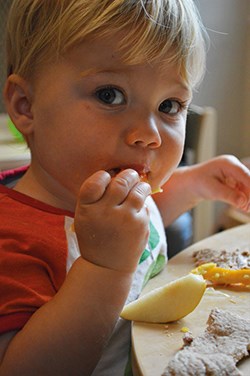 Babies are also getting bigger. The average weight for boys is now 7lb 8oz (3.4kg) – up by 20oz (0.57kg) since the 1970s; for girls it is now 7lb 4oz (3.3kg) – an increase of 1.5oz (43g). The prevalence of babies weighing 9lb 15oz (4.5kg) or above at birth rose by 20 per cent in the decade to 2003.
Babies are also getting bigger. The average weight for boys is now 7lb 8oz (3.4kg) – up by 20oz (0.57kg) since the 1970s; for girls it is now 7lb 4oz (3.3kg) – an increase of 1.5oz (43g). The prevalence of babies weighing 9lb 15oz (4.5kg) or above at birth rose by 20 per cent in the decade to 2003.
Breastfeeding
Dr Cheryll Adams, executive director at the Institute of Health Visiting, would like all pregnant women to be seen by a health visitor at 36 weeks, believing, ‘This is a really good time to talk about breastfeeding and looking after themselves.’
Pinki Sahota, professor of nutrition and childhood obesity at Leeds Beckett University, agrees, ‘The ante-natal period is a prime time to get positive messages across.’
Of course, not all mothers are able or willing to breastfeed, and only 3 per cent of babies in the UK are exclusively breastfed up to five months. There are many and varied reasons for encouraging breastfeeding, but those that relate to obesity prevention are particularly important:
There is a 26 per cent reduction in the odds of children becoming obese if they are exclusively breastfed for the first five months.
- Breastfed babies are better able to regulate their intake – they are in control.
- Breastmilk has a lower protein content than formula, which may protect against raised insulin levels.
- Breastmilk includes the appetite regulator ‘leptin’, which cannot be produced synthetically.
- Breastmilk exposes babies to a wide variety of flavours not possible to replicate in formula, which has a positive impact on children's food preferences later on.
We know that babies in utero are attracted to sweet tastes – ‘one of the most powerful taste signals for babies and humans’ oldest reward’ (Mennella 2008). Rafael Peres-Escamilla, professor of epidemiology at Yale School of Public Health, explains, ‘The elegant biology that attracts children to mother's milk and to sources of energy and protects them from poison makes them vulnerable to obesity’ (Washington USA workshop, October 2015).
Changing feeding habits
There is a critical period between the end of three months and the beginning of five months when the feeding habits of infants go through a significant change. At the beginning of this period 20 per cent of infants have been exposed to complementary foods, a proportion that rises rapidly to 40 per cent by the end of this period.
Rapid weight gain between four and six months has been linked to obesity between the ages of five and 14 years. A study from Halton, North West England, suggests that the most weight gain in the cohort of children involved happened between two and eight months. In the US, it is recommended that weaning should not start before four months to mitigate the possibility of later obesity. Maternal health is therefore critical.
Schemes that currently target maternal health include:
Healthy Eating and Lifestyle in Pregnancy (HELP) –this Cardiff programme aims to combat unhealthy lifestyles and weight gain during pregnancy. Women with a BMI over 30 are invited to join a group that meets weekly. The results are encouraging, with 75 per cent of participants now buying more fruit and veg and 60 per cent eating fewer takeaways.
Healthy Mums – More than 50 mothers are referred by midwives a month to this initiative created by Telford and Wrekin Council. The mothers meet regularly with a healthy lifestyle advisor throughout their pregnancy and regular support and advice is available to them for the first six months.
Ready Steady Mums – developed by the Institute of Health Visiting, this scheme brings mothers together for a walk and talk in the weeks after birth – fresh air and gentle activity are better than coffee and cake.
Healthy Beginnings – this Australian programme, focusing on breastfeeding, infant feeding and physical activity, has shown to have a positive effect on the BMI of children at age two, but this impact was not sustained when the children were reviewed at age five.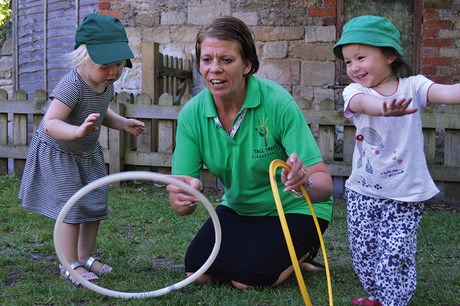
ONE TO THREE YEARS
Professor Yvonne Kelly claims that, ‘Intervening in the early years when the family environment has more profound influences on children's healthy development has the potential to be particularly effective.’
Currently, 166,920 two-year-olds are accessing some form of free early childhood education – 68 per cent of those eligible – so there is definitely a role here for the early years workforce to support and promote positive behaviours towards the health and well-being of children in their care.
Since 2013, local authorities have been responsible for improving health, but tackling the known determinants of childhood obesity is not part of their remit. However, the early years community is in daily contact with young children and their families and, therefore, in a prime position to address with daily practice these ‘determinants’: nutrition, physical activity, sleep and screentime.
Compared with children in the 50th percentile (normal weight), children who are overweight or obese aged two years are four times more likely to be obese as adults.
Two years is a critical age; it is the time when habits and behaviours towards food, physical activity, sleep and screentime are acquired and embedded.
Nutrition
After their first birthdays, 70-90 per cent of children ingest some type of sweet (food or drink) regularly. By age two, children are more likely to eat a sweet than any fruit or veg. One third of the calorie increase between six and 48 months is due to confectionery, cakes and sweet drinks. Evidence suggests that infrequent intake of fruit and veg at age two is associated with the same behaviours aged six. Likewise, if children are exposed to sweet foodstuffs in infancy, they are twice as likely to access them aged six.
Using a bottle after 18 months also affects the likelihood of obesity. For every month after 18 months that a child uses a bottle, the likelihood of obesity rises by 3 per cent. Seventy-five per cent of one- and two-year-olds use both a cup and a bottle.
Many families are positive about nutrition but, says Claire Hamilton, physical development manager at Birmingham's Startwell Programme, ‘I see children all the time who can't hold a knife and fork, their parents cut up everything for them, and blow on everything. The portions are way too big. They shop for everything online – meal deals are always on unhealthy foods.’
A health practitioner in London also talks of many families with ‘chaotic eating habits’ and mothers being ‘proud of their fat, quiet babies’. There is also a general concern that ‘hard to reach’ ethnic communities may be resistant to accessing support.
Early years practitioners are in daily contact with families – and food and nutrition policies and provision have become increasingly visible and well resourced – so what can we do to support families in combatting obesity?
How you can help
- Implement the Eat Better Start Better Voluntary Food and Drink Guidelines for Early Years Settings in England – A Practical Guide, along with the Food Standards Agency and Caroline Walker Trust guidance on food procurement and healthy catering.
- Embed a healthy-eating ethos in your setting and acknowledge your own eating behaviours.
- Encourage parents to be involved and contribute towards the planning and provision of healthy food in your setting.
Physical activity
Quantitative data that confirms a link between physical activity and early childhood obesity prevention is currently ‘limited and observational’. However, physical activity plays a critical role later on in obesity prevention, and the positive behaviours towards physical activity are acquired in the early years. The Chief Medical Officer Physical Activity Guidelines for young children recommend that all children should be active for 180 minutes over the course of a day.
How you can help
 Be aware that ‘being busy’ doesn't necessarily mean ‘being active’, so remember to ‘keep the belly button on the move’.
Be aware that ‘being busy’ doesn't necessarily mean ‘being active’, so remember to ‘keep the belly button on the move’.- Plan for a mix of structured, semi-structured and free-play opportunities: inside and outside, in a group or alone, with or without apparatus.
- Respond to your observations – don't simply record for the sake of it. If children can't do something then find out why.
Sleep and sedentary behaviour
Children who have less than ten hours sleep per night aged three are known to be at risk of obesity. Fatigue has a negative effect on metabolic functioning and appetite hormones and prevents children from engaging fully in physical activities.
Children who experience eight hours or more of screentime per week have a higher risk of obesity aged eight. US recommendations are that children have no more than 30 minutes screentime per day within settings, and have a maximum sedentary time no longer than 15-30 minutes at any one time. In Australia, no screentime at all is advised for under-twos, and no more than one hour daily for two- to five-year-olds. Children should not be sedentary for longer than one hour at any period other than when sleeping or eating.
The UK has no time-specific recommendations for screentime but does recommend ‘minimising the amount of time’ children are sedentary. The ‘Baby B Well’ campaign for car safety recommends young children should not remain in car seats for longer than 90 minutes at a time.
How you can help
- Be aware of the facts: good sleep patterns have a positive impact on levels of physical activity, which plays an important role in obesity prevention later in life.
- Encourage parents to minimise their children's screentime. It doesn't support good posture, eyesight or the wide range of manipulative skills needed to engage successfully with curricular activities.
THREE- TO FIVE-YEAR-OLDS
According to the US Centers for Disease Control and Prevention, ‘The education sector has a critical role to play in providing nutrition and health education and in increasing opportunities for physical activity and promoting healthy school environments.’
It notes also that ‘The early years setting provides a spectrum of opportunities and multiple levels for the promotion of healthy practices’ (Washington USA workshop, October 2015).
Currently, 96 per cent of eligible three- and four-year-olds have taken up the offer of 15 hours’ free nursery provision. If the 30-hour initiative becomes widespread, the early years workforce will be in an even stronger position to create, implement and support health and well-being.
In the US, early years settings have recently been identified as a ‘missed opportunity’ for obesity prevention. At present, the sustainability rate of interventions for childhood obesity is not good, which makes it even more imperative that practitioners are well-informed and confident that the policies, initiatives and information that relate to the four main determinants of childhood obesity (nutrition, physical activity, sleep and sedentary behaviour) are visible, understood and supported by all relevant parties.
Nutrition
The aggressive marketing of calorie-laden foods to young children has been identified as one of the critical issues in combating obesity. Children are consuming 200 calories more per day than they did 30 years ago. The additional intake of calories needed to maintain the added body mass that results is worth $20-60 billion to the US food industry alone. How cynical that one breakfast cereal (basically chocolate parcels) is called Krave?
By age four, 92 per cent of children consume less than the daily recommended amount of fruit and veg and 99 per cent are exceeding the recommended intake of added sugars. In the US, by age four, children are eating fast food and takeaways between one and four times per week.
Fizzy drinks are a particular concern – 30 per cent of daily sugar intake for children aged four to ten years comes from these drinks. Sugar in liquid form does not contain the same ‘triggers’ as sugar in food – if children ate the amount of sugar they drink they would be very unwell.
The general consensus is that the majority of children identified as overweight and obese do not actively need to lose weight, rather that their BMI should not increase – but reduce – as they become older and more active. The BMI of children should be at its highest (17.5) at one year, and then drop to 15.5 aged five to six years. Fundamentally, there is no physiological reason why children should be overweight by the time they start school.
Ms Hamilton of Startwell would like to see practitioners being much more forceful with parents. She says, ‘Parents take for granted that their children will be properly fed at nursery, so they can give them junk on the way home… I wish parents wouldn't use food as a treat or bribe, it sends out completely the wrong messages.’
How you can help
- Resources to support healthy food and nutrition are mainly excellent. Find and use them.
- Be aware that the behaviours, rituals and habits relating to food are as important as the food itself, and these will vary between cultures, including sourcing, preparation, cooking and eating.
- Discuss what behaviours you feel impact keeping fit and healthy and why, then agree the messages you want to pass on to parents.
Cornwall local authority's ‘Nippers Nutrition Programme’ for early years staff has five levels to work through. So far, 75 settings are taking part in the scheme, which provides advice on menus, portion size and recipes. Wigan local authority's six-week ‘Healthy Lifestyles’ programme also includes the early years and covers cooking, eating and physical activity.
Physical activity
 Professor Dianne Ward of the University of North Carolina's Center for Health Promotion and Disease Prevention makes clear that, ‘Providing structured physical activity sessions increases the overall level of physical activity’, and plays a valuable role in obesity prevention in later childhood.
Professor Dianne Ward of the University of North Carolina's Center for Health Promotion and Disease Prevention makes clear that, ‘Providing structured physical activity sessions increases the overall level of physical activity’, and plays a valuable role in obesity prevention in later childhood.
Physical activity is a critical component in ensuring children's overall health and well-being, but linking it to obesity prevention in young children undoubtedly causes problems for parents. Presenting it as a solution to obesity at this age may be seen as very negative, particularly as most parents claim their children are ‘very active’ anyway and 47 per cent dispute their child's weight status when given the information.
Less than 10 per cent of young children experience the recommended 180 minutes of daily physical activity. There may be an argument for promoting physical activity through a ‘school readiness’ or ‘life chances’ approach that may appeal more to parents and be more likely to ‘incite’ their support and engagement.
How you can help
- Be aware of the CMO Early Years Physical Activity Guidelines, and the accompanying infographic.
- Reflect on your physical activity policy to establish what opportunities children have to be truly physically active, rather than just ‘busy’.
- Determine possible times when the children could be more active. Do they currently always have to sit in a circle? Do they have opportunities to be equally active inside and outside? Is there a ‘movement corner’ for them to practise movement skills? How long do they sit at tables?
- Reflect on whether you give consistently positive messages to parents about physical activity. Some parents may need to be ‘incited’ to support physical activity, so analyse what the barriers may be.
Sleep and sedentary behaviour
Positive sleep behaviours are very important. Children by aged five should be sleeping 11 hours per night with no daytime naps. Young children who are in bed by 8pm are 50 per cent less likely to be obese ten years later. The two hormones that relate to appetite and hunger (leptin and ghrelin) are affected when children do not get enough sleep.
Despite dire warnings and recommendations, the average two- to five-year-old is now exposed to some type of screen for an average 32 hours per week. The range and ubiquity of devices makes sticking to any recommendations very challenging.
How you can help
- Make sure everyone in your setting understands the link between sleep, screentime and obesity.
- Raise awareness among parents about the health issues related to extended screentime.
- Encourage parents to minimise children's screentime at home.
CONCLUSIONS
Childhood obesity is a relatively new phenomenon, so we should not be surprised or dismayed that policies and initiatives to address it are, as yet, not clearly formulated or coherent. A comprehensive system of primordial prevention and preventive action is sorely needed but we must acknowledge that this takes time and the level of co-ordination required between government departments, local authorities, relevant bodies and institutions will be a challenge.
Continual and extended contact with families and communities leaves the early years workforce in a unique position to support children's health and well-being and create a culture that recognises and responds to the four main determinants of childhood obesity: healthy nutrition will be supported, engagement in physical activity valued and sleep and sedentary behaviours addressed.
Positive behaviours and dispositions are embedded early and ‘life chances’ and ‘school readiness’ begin with physical health and well-being. It is a vital part of our remit that children are physically ready and able to enjoy and engage successfully with all the learning experiences afforded them.
CASE STUDY: TALL TREES KINDERGARTEN, FROME
Since opening its doors ten years ago, excellent food and physical activity have been top priorities at Tall Trees Kindergarten, Frome.
Managing director Emma Comer says, ‘Young children are naturally active learners. They are constantly on the go and exploring the world around them. This is how they develop and thrive. To facilitate this, young children have high energy needs from food and that is why optimum nutrition is a priority for us as well.’
Among the dishes on the summer menu are organic oriental ginger salmon with stir-fried vegetables and brown rice noodles, and organic Spanish chicken and lentil casserole with green olives and served with herby couscous.
‘Our menu is mostly organic, highly nutritious, extremely low in sugar and cooked from scratch daily by our full-time cook. We also hold a Gold Soil Association award for our food,’ explains Ms Comer.
The setting has a no-screen policy, giving children even more time outdoors (see also page 30). Ms Comer chose the premises for the setting because of its abundant outdoor space.
She says, ‘Staff are told that the job entails as much outdoor experience as possible whatever the weather, so that they can make the decision as to whether this interests them or not.’
To give everyone daily, year-round access to the outdoors, the setting provides wet weather gear for staff and children, and for babies, fleeces, hats and waterproof suits and Padders (if too young to wear Wellingtons).
As well as running daily Forest School sessions for three- and four-year-olds, the pre-schoolers also now enjoy four-hour sessions in the setting's ‘Nature School’.
A covered space with woven hazel walls, this outdoor classroom includes a creative learning area (for junk modelling, etc), a book corner, a water station with tubes, channels and a pulley system, a large block play and ‘loose parts’ area and huge mud-painting and chalk boards.
‘It has been carefully designed to facilitate learning in a healthy and stimulating environment, where children can use gross motor movement much more than indoors,’ says Ms Comer. ‘And we give parents as much information as possible as to the benefits of active learning for their child.’
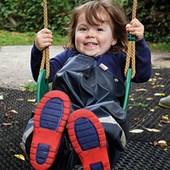 RESOURCES AND TRAINING
RESOURCES AND TRAINING
- www.activematters.org
- www.childrensfoodtrust.org.uk
- BHF ‘Early Movers pack’, www.bhfactive.org.uk
- The Power of Physical Play DVD, www.sirenfilms.co.uk
- Overweight and Obesity – leaflets, www.infantandtoddlerforum.org
- CMO Physical Activity Guidelines for Early Years (Walkers and Non-Walkers) and infographic, www.bhfactive.org.uk
- www.henry.org.uk
- www.mendprogramme.org
- www.readysteadymums.org
- www.startwellbirmingham.co.uk
- www.greatersport.co.uk
- www.shinehealthacademy.org.uk
REFERENCES
- www.nurseryworld.co.uk/nursery-world/news/1158426/health-campaign-says-young-children-should-have-three-hours-activity-a-day
- National Academies of Science, Engineering and Medicine (2016) ‘Obesity in the early childhood years: State of the science and implementation of promising solutions’, Workshop Summary. The National Academies Press
- www.local.gov.org (2016) ‘Healthy Weight – Healthy Futures. Local Government action to tackle childhood obesity’
- WHO (2016) ‘Report of the commission on ending childhood obesity’, www.who.int/end-childhood-obesity/en
- Royal Society of Public Health (2015) ‘Position paper: Tackling the UK's Childhood Obesity Epidemic’, www.rsph.org.uk
- Royal College of Paediatrics and Child Health (2015) ‘Tackling England's childhood obesity crisis’, www.rcpch.ac.uk
- Children's Food Trust (2015) ‘Child Obesity – their lives in our hands’, www.childrensfoodtrust.org.uk
- ‘Childhood Obesity: A Plan for Action’, August 2016, www.gov.uk/dh
- Mennella JA (2008) ‘The sweet taste of childhood’ in The senses: A comprehensive reference, Vol 4. Elsevier
- Perry C, Thurston MN and Arch BN (2015) ‘Exploring overweight and obesity in pre-school children using routinely collected data: a case study of Halton, Northwest England’, Journal of Public Health, 28 October 2015
- CDC (2015) ‘Defining Childhood Obesity’, www.cdc.gov/obesity/childhood/defining.html
- Ward DS and Benjamin SE (2008) ‘Nutrition and Physical Activity in Childcare: Results from an environmental intervention’, American Journal of Preventative Medicine 35 (4), 352-356
Photos at Tall Trees Kindergarten, Frome by Sam Harvey




